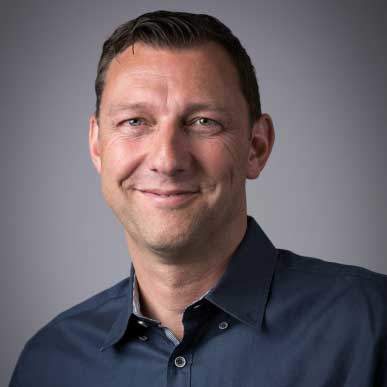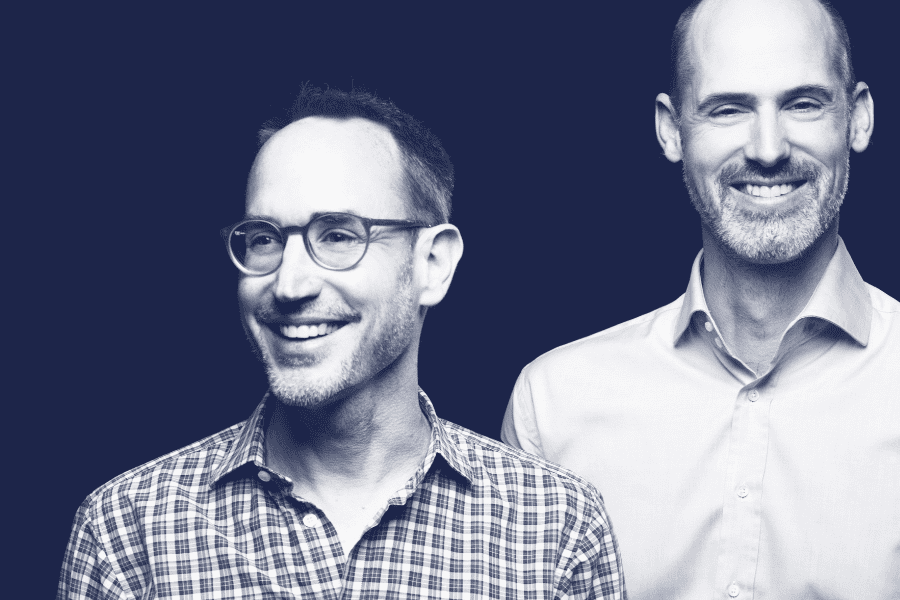Traditional media houses are in the middle of a rapid and profound transformation: Print advertising revenues are falling off a cliff because the economy of attention is shifting. Novel forms of content creation and marketing collaborations are emerging. One example of such a new approach is that Tamedia is working with Picstars, a digital platform for brand ambassadors. We spoke to Mark Sandmeier, founder of Picstars, and Marco Gasser, Chief Sales Officer of 20 Minuten, a Tamedia publication. 20 Minuten offers advertisers the possibility to buy content creation by Picstars influencers and distributes this content on its proprietary channels on Facebook and Instagram, reaching a large young audience.

CEO, Picstars
Mark Sandmeier is co-founder and CEO of Picstars. He’s a member of the board of several startups, including TestingTime and ServiceHunter. Mark was CEO of Jobs.ch, which was sold to Tamedia and Ringier for CHF 390 million in 2012.

Chief Sales Officer, 20 Minuten
Marco Gasser joined Tamedia in 2001. He is Chief Sales Officer for 20 Minuten and sits on the board of directors of Picstars. Marco has a Master in Digital Business from HWZ.
Can you two briefly explain what you do and why?
Marco: 20 Minuten is the strongest media brand in Switzerland. I started as the first online media salesperson here, now I’m responsible for all channels in Switzerland. The main challenge we and the industry in general have is how to compensate declining print advertising revenues with our digital channels.
Mark: As CEO, I sold Jobs.ch, an online marketplace for classified advertising. Now with Picstars, I am in the space where young people consume content. They get the news from their community, from social networks, not from print or online media sources. Picstars is a digital platform that allows brands to find influencers which will create exciting content for them and share it on social networks.
How well is 20 Minuten handling the transition you mentioned?
Marco: We’re one of the few brands that have successfully changed in line with consumer habits. We’ve established our presence on social media, namely Facebook and Instagram, a few years ago and can offer our advertising clients an encompassing range of channels: print, digital, and social media. And for social media, you need a special approach, which Picstars with its influencers provides. That being said, it’s no secret that printed titles have massive problems. Their user base gets older and older while the advertising market has turned to social networks, where the young generation gathers.
“Content marketing is very important for us and has been so for a decade already.”
When did you two meet?
Marco: I met Mark when Tamedia made its first investment in Picstars through its venture arm. Of all Tamedia titles, 20 Minuten was closest to Picstars domain of expertise. Content marketing is very important for us and has been so for a decade already.
Mark: With content marketing, we offer an asset that fits perfect with 20 Minuten’s brand and existing offering. Content marketing is growing fast, with about 20% per year. Our influencers, which are basically faces that share content, allow advertisers to reach Instagram and Snapchat, where the 15-to-30-year-old target audience is. But whoever wants to sell a product needs a media landscape and access to readers and we can deliver that.
Content can mean many things. Can you illustrate with a few examples what it means in this context?
Mark: Energie Schweiz, an initiative of the Swiss office of energy, wanted to do an awareness campaign. Picstars connected them to 80 micro-influencers that posted hundreds of pictures and stories on Instagram about how they personally save electricity in their daily life. Those pictures are usually accompanied by a short text and hashtags like #saveelectricity that make the topic visible.
Marco: The important point is how your message gets across: When you follow people you admire on a social network, you trust them, maybe even more than an unknown journalist. And the tone of the message needs to be adapted to the audience. Some people understand a message better if it comes from Sarah Höfflin, a freestyle skier, instead of an ETH professor.
How do you become an influencer?
Marco: The definition of an influencer is someone who is able to build a community that follows them. So you have to have something to say that interests people, be that about vegan cooking or mountaineering. With more influencers appearing, the topics get more and more granular and specialized. If you already are a celebrity to begin with, because you’re a sports star, for example, it’s much easier. But whatever you do, you need to stay credible. There are a few very bad examples where influencers have endorsed campaigns which clearly had nothing to do with what they stand for, and this is bad for them and for the brands. Imagine pictures of people riding their bike to town with washing powder in their bike basket, or eating a beef snack in their bathtub.

The deep-tech VC of choice for entrepreneurial investors
Since 2010, we have invested in 180 European deep tech companies based on topical experience. With a highly skilled team of investment professionals, we back outstanding entrepreneurs driving growth in key industries. Verve is the pioneer of deep tech in Europe.
Say a consumer brand hires an influencer via Picstars. How much control does the brand have over the manner in which the products are presented by the influencer?
Mark: There is a wide range of how this can be done. We advise brands to establish a broad concept of what the campaign should be about and then ask the influencers how they would put that into practice. Then they can say, yes, we like that approach and choose the corresponding influencer. In general, we see that advertisers first need to learn how to relinquish control. They should understand that they hire creative agents which should produce content in a way that is natural for them.
What if the influencer post things that the advertiser really doesn’t like?
Mark: Many customers voice this fear first, but we almost never have negative feedback. Apart from that, pricing follows engagement. Engagement is measured by how many followers like and share the content. And good content has a high engagement rate. So the advertisers pay for good outcomes.
Which kind of industries are at the forefront of these new marketing trends?
Marco: It started with beauty and fashion and has spread to many industries including retail, telco and automotive. If it is a global brand, they’ll do it. If they’re based in the US and UK, there is no educational work necessary because they’re ahead in this regard. The financial services sector is still reluctant to try it out.
“Social posts that are tagged as advertising don’t perform worse because of that.”
Influencer marketing gives rise to questions pertaining to media ethics. Since the link between follower and influencer is so intimate, some people might not realize that they’re served advertisement. How do you handle this?
Mark: We tell every influencer should mark paid posts clearly by including the hashtags #sponsored or #advertisement. In Switzerland, we still don’t have court rulings regarding this question but in Germany, it has been answered by rulings and everybody adheres to these rules.
Marco: One important learning that has been confirmed by a scientific paper is that social posts that are tagged as advertising don’t perform worse because of that. Even a young audience is conscious of the fact that their idols are making money with these posts.
Speaking of which, many teens dream of getting rich just by posting some cute pictures on Instagram. But how much money do real influencers make?
Mark: In our database, we have several thousand relevant influencers in the German-speaking countries. Some of them have just a thousand followers, the Bachelor has 350’000. A very rough way to calculate an influencers revenue is to take a third of the likes their content garners. So if an Instagram post has 300 likes, they earn 100 Francs. They are but a few influencers in Switzerland that can make a living from this alone. For athletes, it is often just an additional income stream.
How has cooperation between Tamedia and Picstars evolved?
Marco: We’ve been working together for about a year now. In the beginning, it took some time to convince our sales team of the value of this offering, but now they see it. The same goes for the advertisers. They started with small budgets first, now they’re getting bigger, and they do more campaigns.
Written by
WITH US, YOU CANCO-INVEST IN DEEP TECH STARTUPS

Verve's investor network
With annual investments of EUR 60-70 mio, we belong to the top 10% most active startup investors in Europe. We therefore get you into competitive financing rounds alongside other world-class venture capital funds.
We empower you to build your individual portfolio.
More News
03.09.2021
“The market came back very strongly”
Covid-19 almost brought the MedTech M&A market to a halt. But now, there is a lot of activity, and the prices that are paid for companies are high. How long will this last? In our interview, M&A expert Alexander Wenzel gives his perspective on what drives the market.
16.01.2020
“I’m a brain plumber”
Stroke is a serious medical condition that affects the brain of 15 million people each year. Since the 1990s, continuous technological improvement enables more lives to be saved year after year. Interventional neuroradiologists can perform operations in a minimally invasive way, guided by modern imaging technology. In this interview, endovascular neurosurgeon Pascal Mosimann explains how.
17.06.2019
“There is no good similar treatment”
Prof. Jonel Trebicka is an expert for liver diseases. He is supervising clinical trials of Versantis' new drug to treat an acute form of cirrhosis, which is very difficult to treat.
Startups,Innovation andVenture Capital
Sign up to receive our regular newsletter and learn about investing in technologies that are changing the world.




